You are using an out of date browser. It may not display this or other websites correctly.
You should upgrade or use an alternative browser.
You should upgrade or use an alternative browser.
J-Jazz (Japanese Jazz)
- Thread starter stpaulbrowns
- Start date
Selaws
Well-Known Member
Oh man, I have been eyeing this up for some time. If it isnt too much hassle, would you be able to share a couple photos of the inside pages when you get around to reading it? Interested to see how its laid out etc.This just arrived via Japan, keen to get stuck in !View attachment 35525
One of the three books about J-Jazz I must read at some time.
The other two are:
View attachment 35528
and, unfortunately only available in Japanese
I have this, it is pretty good. I feel like Blue nippon is a better book, but it depends on what you are looking for
kafunis
Well-Known Member
Ok , here’s some pages, quite a few b & w photos scattered throughout, candid shots mainly not Pro quality, I’m hoping to start it in the next day or so, will give more details later.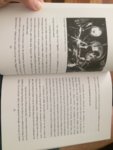
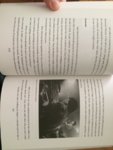
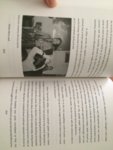
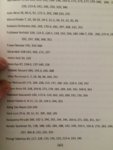




Oh man, I have been eyeing this up for some time. If it isnt too much hassle, would you be able to share a couple photos of the inside pages when you get around to reading it? Interested to see how its laid out etc.
Mr Moore
Well-Known Member
Cross post from the Online Vinyl Deals, new BBE J-Jazz Masterclass Series release Sasaki Hideto - Sekine Toshiyuki Quartet + 1 – Stop Over is 28,15€ (+ free shipping) on Dodax.de

21 quid at Amazon UK at the minute if this works out cheaper for anyone.
Stop Over (2LP) [VINYL]: Amazon.co.uk: Music
Shop Stop Over (2LP) [VINYL]. Everyday low prices and free delivery on eligible orders.
smile.amazon.co.uk
Selaws
Well-Known Member
That will teach me not to rush in21 quid at Amazon UK at the minute if this works out cheaper for anyone.
Stop Over (2LP) [VINYL]: Amazon.co.uk: Music
Shop Stop Over (2LP) [VINYL]. Everyday low prices and free delivery on eligible orders.smile.amazon.co.uk
Selaws
Well-Known Member
Fantastic, thanks for this! For some reason I thought it was going to be split, japanese on one side and english on the other. Will definitely look into picking this up now, thanks again!Ok , here’s some pages, quite a few b & w photos scattered throughout, candid shots mainly not Pro quality, I’m hoping to start it in the next day or so, will give more details later.View attachment 38621View attachment 38622View attachment 38623View attachment 38624
Abstract Truths: An Evolving Jazz Compendium – Vol 7 / Japanese Jazz
Volume seven of Abstract Truths, An Evolving Jazz Compendium. For this installment we connected with Tony Higgins and Mike Peden–the pair behind BBE Music’s ongoing Japanese jazz series. On the heels of its sixth (and latest) edition, Stop Over by Hideto Sasaki – Toshiyuki Sekine Quartet +1, Higgins and Peden serve up a broad spectrum of the J Jazz sound and focus on the golden period from the 1970s into the early 80s when jazz in Japan came into its own identity and sound.
100 minutes of library groovers – dance floor bangers – funky fusion – modal swingers – big band stompers – jazz rock psychedelia and the impeccable sound of TBM are all represented.
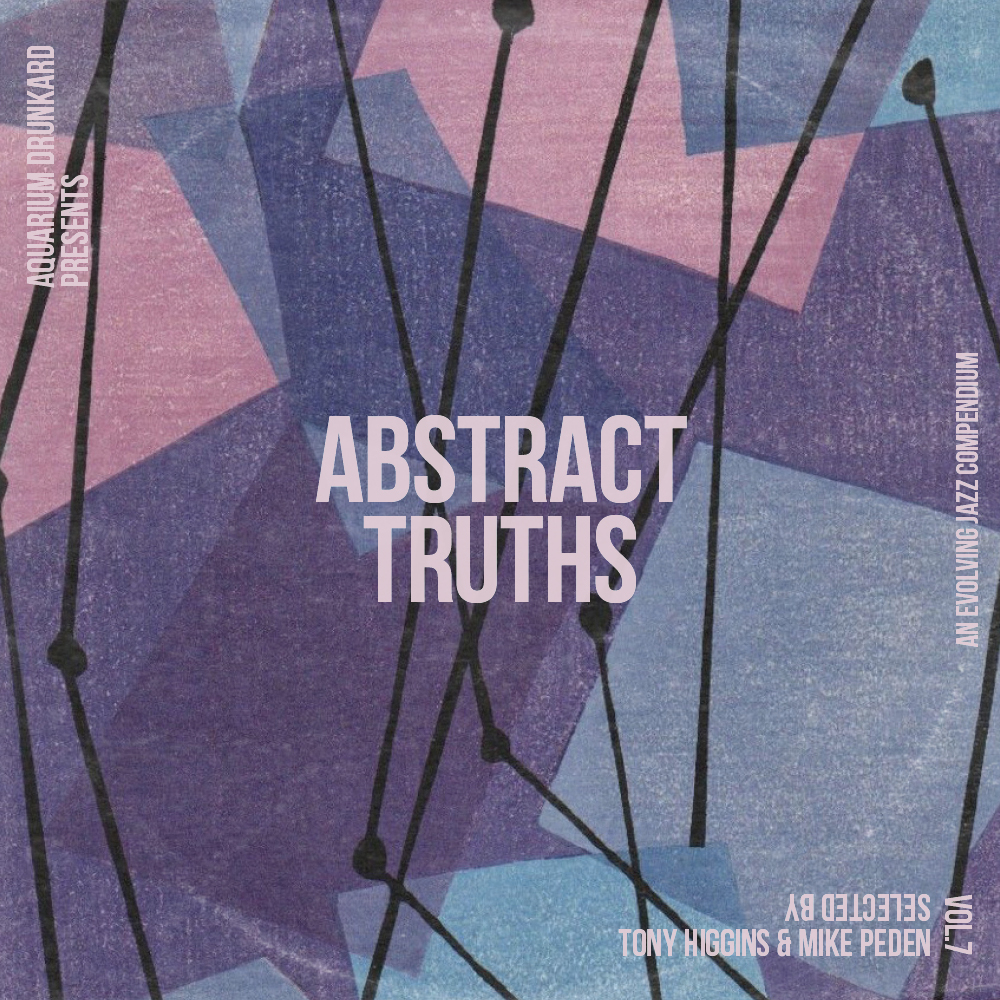
 aquariumdrunkard.com
aquariumdrunkard.com
Volume seven of Abstract Truths, An Evolving Jazz Compendium. For this installment we connected with Tony Higgins and Mike Peden–the pair behind BBE Music’s ongoing Japanese jazz series. On the heels of its sixth (and latest) edition, Stop Over by Hideto Sasaki – Toshiyuki Sekine Quartet +1, Higgins and Peden serve up a broad spectrum of the J Jazz sound and focus on the golden period from the 1970s into the early 80s when jazz in Japan came into its own identity and sound.
100 minutes of library groovers – dance floor bangers – funky fusion – modal swingers – big band stompers – jazz rock psychedelia and the impeccable sound of TBM are all represented.

Abstract Truths: An Evolving Jazz Compendium – Vol 7 / Japanese Jazz : Aquarium Drunkard
...the golden period from the 1970s into the early 80s when jazz in Japan came into its own identity and sound. 100 minutes of library groovers - dance floor bangers - funky fusion - modal swingers - big band stompers - jazz rock psychedelia and the impeccable sound of TBM are all represented.
surrealmadrid75
Member
Some of you may be interested in this. A local DJ to us ( The Return of the Illicit Groove #IGblog: IG011) interviewed Mike Peden of BBE about J-jazz. Think this was the 1st of 2 episodes.
Last edited:
indiana45s
Member
Bad news from Japan, George Otsuka played on many TBM records including Blow Up and Orang-Utan, two the most famous.
Sad news. He has so many great records!
More bad news from Japan. According to Japanese Jazz Room group on Facebook, Ryo Kawasaki died today. He played with most of the best 70's J-Jazz musicians like Takeshi Inomata as a member of Sound Limited group, Jiro Inagaki or Minoru Muraoka. He also played wuth Gil Evans, Elvin Jones or Gato Barbieri. Recently, Studio Mule reissued his album Little Tree under the name of Ryo Kawasaki & The Golden Dragon.
Selaws
Well-Known Member
Bad news from Japan, George Otsuka played on many TBM records including Blow Up and Orang-Utan, two the most famous.
More bad news from Japan. According to Japanese Jazz Room group on Facebook, Ryo Kawasaki died today. He played with most of the best 70's J-Jazz musicians like Takeshi Inomata as a member of Sound Limited group, Jiro Inagaki or Minoru Muraoka. He also played wuth Gil Evans, Elvin Jones or Gato Barbieri. Recently, Studio Mule reissued his album Little Tree under the name of Ryo Kawasaki & The Golden Dragon.
Awful news. I have just started getting into these guys' music as well with their latest reissues. Such a shame.
A new unreleased Kaoru Abe Set from 1977 (CD only), but think i might pick this up.
The father is Coltrane, The son is Sanders, The Holy Spirit is Ayler, Abe would be what?
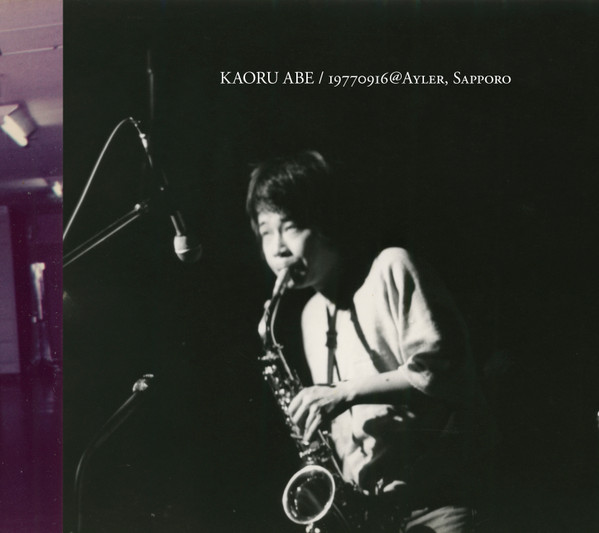
 www.discogs.com
www.discogs.com
The father is Coltrane, The son is Sanders, The Holy Spirit is Ayler, Abe would be what?

Kaoru Abe - 19770916@Ayler, Sapporo
View credits, reviews, tracks and shop for the 2020 CD release of "19770916@Ayler, Sapporo" on Discogs.
 www.discogs.com
www.discogs.com
kafunis
Well-Known Member
The answer to that is above my paygrade .
.
The father is Coltrane, The son is Sanders, The Holy Spirit is Ayler, Abe would be what?

Kaoru Abe - 19770916@Ayler, Sapporo
View credits, reviews, tracks and shop for the 2020 CD release of "19770916@Ayler, Sapporo" on Discogs.www.discogs.com
I received a new shipment from Japan this morning. All these records are used ones but in perfect shape. I was a bit concerned about the way HMV grade their second hand records but they are very protective and all the records are NM, sleeves are between VG+ and NM. All were noted complete with OBI and inserts and I received the records complete.
I am listening to A Figure of Yosuke Yamashita Vol.2 right now and it sounds really good, no static, no noise and flat as a pancake. Will definitely give more attention to HMV second hand section, there are some real gems there.
Native Son – Carnival ~Live At Montreux
Yosuke Yamashira – A Figure Of Yosuke Yamashita Vol. 2
Yosuke Yamashita Trio – Hot Menu
Keitaro Ikeda - Kono Kurai Jiki Nimo (this is folk, not jazz, discovered it thanks to Youtube algorythm)
Various – Blue Note Street Part 2 (EP with covers of Moanin', A NIght in Tunisia, etc... by people like Soil & "Pimp" Sessions, Toshio Matsura Group, etc...)
Yoshio Suzuki & Tsuyoshi Yamamoto – Loving Touch
Various – Getz/Gilberto +50 Featuring Getz/Gilberto Lovers (re-work with Japanese artists like Yosuke Yamashita, Ryuichi Sakamoto, Haruomi Hosono, etc...)
And a book, all in Japanese unfortunately, with a lot of information about Three Blind Mice. You can see some picture here.
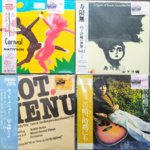

I am listening to A Figure of Yosuke Yamashita Vol.2 right now and it sounds really good, no static, no noise and flat as a pancake. Will definitely give more attention to HMV second hand section, there are some real gems there.
Native Son – Carnival ~Live At Montreux
Yosuke Yamashira – A Figure Of Yosuke Yamashita Vol. 2
Yosuke Yamashita Trio – Hot Menu
Keitaro Ikeda - Kono Kurai Jiki Nimo (this is folk, not jazz, discovered it thanks to Youtube algorythm)
Various – Blue Note Street Part 2 (EP with covers of Moanin', A NIght in Tunisia, etc... by people like Soil & "Pimp" Sessions, Toshio Matsura Group, etc...)
Yoshio Suzuki & Tsuyoshi Yamamoto – Loving Touch
Various – Getz/Gilberto +50 Featuring Getz/Gilberto Lovers (re-work with Japanese artists like Yosuke Yamashita, Ryuichi Sakamoto, Haruomi Hosono, etc...)
And a book, all in Japanese unfortunately, with a lot of information about Three Blind Mice. You can see some picture here.


indiana45s
Member
I did hear that ems and air shipments from Japan are stopped and it may take 3-4 months to get out the ones that have already piled up at the airport
I received a new shipment from Japan this morning. All these records are used ones but in perfect shape. I was a bit concerned about the way HMV grade their second hand records but they are very protective and all the records are NM, sleeves are between VG+ and NM. All were noted complete with OBI and inserts and I received the records complete.
I am listening to A Figure of Yosuke Yamashita Vol.2 right now and it sounds really good, no static, no noise and flat as a pancake. Will definitely give more attention to HMV second hand section, there are some real gems there.
Native Son – Carnival ~Live At Montreux
Yosuke Yamashira – A Figure Of Yosuke Yamashita Vol. 2
Yosuke Yamashita Trio – Hot Menu
Keitaro Ikeda - Kono Kurai Jiki Nimo (this is folk, not jazz, discovered it thanks to Youtube algorythm)
Various – Blue Note Street Part 2 (EP with covers of Moanin', A NIght in Tunisia, etc... by people like Soil & "Pimp" Sessions, Toshio Matsura Group, etc...)
Yoshio Suzuki & Tsuyoshi Yamamoto – Loving Touch
Various – Getz/Gilberto +50 Featuring Getz/Gilberto Lovers (re-work with Japanese artists like Yosuke Yamashita, Ryuichi Sakamoto, Haruomi Hosono, etc...)
And a book, all in Japanese unfortunately, with a lot of information about Three Blind Mice. You can see some picture here.
View attachment 43605View attachment 43606
I did hear that ems and air shipments from Japan are stopped and it may take 3-4 months to get out the ones that have already piled up at the airport
Depends on the country and the carrier. EMS stopped shipping to several countries, to others it will take longer than usual and to the USA they seem unable to predict a reliable delivery time. More information can be found here.
To France there are no real issue except some delay. This parcel was posted on April 14th, left Tokyo on 25th, landed in France yesterday and was delivered today. Not bad.
Blank Forms are releasing two Masayuki Takayanagi New Direction Unit live LPs - Axis/Another Revolvable Thing 1 and 2. I couldn't be more stoked. Black Editions I believe at some point are releasing some cannon of his discography soon too. For those into Free Jazz, pre harsh noise/avant Japanese scene, you will want these.

Axis/Another Revolvable Thing is the second installment of Blank Forms’ archival reissues of the music of Japan’s eternal revolutionary Masayuki Takayanagi, following April is the cruellest month, a 1975 studio record by his New Direction Unit. Comprised of recordings of a September 5, 1975 concert by the New Direction Unit at Yasuda Seimei Hall in Tokyo’s Shinjuku district, the two volumes showcase Takayanagi in deep pursuit of what he began calling “non-section music” after leaping beyond the confines of his prior descriptor “real jazz.” The quartet of Takayanagi (guitar), Kenji Mori (reeds), Nobuyoshi Ino (bass, cello), and Hiroshi Yamazaki (percussion) deftly explores the twin poles of Takayanagi’s spacious “gradually projection” and explosively virulent “mass projection” concepts across six pieces, titled Fragments I - VI and split between the two LPs.
As part of his liner notes for Part 1 (newly translated for this edition), noted Japanese free jazz critic Teruto Soejima wrote:
New Direction Unit performances always emit the smell of blood. Fresh blood, never blood that is old or crusted. This is not the desiccated shell of music, it’s sound through which pumps the blood of living human beings. Blood that seethes, that flows and counterflows, that blazes, runs, rises and congeals, blood that vomits and spurts. Vivid, scarlet blood. The ultimate beauty that Takayanagi aims at, is it not the color of this blood?
Blood calls out to blood. For these four musicians, playing together means feasting on each other’s blood. It is also a summon- ing to a secret blood oath, to the creation of solidarity with the audience. In the moment, truly, the situation and beauty are instanta- neously unified. To borrow the title of a movie by Kōji Wakamatsu: blood is redder than the sun.
Masayuki “Jojo” Takayanagi (1932 - 1991) was a maverick Japanese guitarist, a revolutionary spirit whose oeuvre embodied the radical political movements of late ‘60s Japan. Having cut his teeth as an accomplished Lennie Tristano disciple playing cool jazz in the late ‘50s, Takayanagi had his mind blown by the Chicago Transit Authority’s “Free Form Guitar” in 1969 and promptly turned his back on the jazz scene by which he was beloved, going as far as to call his former peers and admirers “a bunch of losers” in the press. Takayanagi had found a new direction, an annihilation of jazz and its associated idolatry of hegemonic American culture. Aiming his virtuoso chops towards the stratosphere, Takayanagi dedicated himself to the art of the freakout, laying waste to tradition left and right, most notably via the all-out assault of his aptly-named New Direction for the Arts (later New Direction Unit) and collaborations with like-minded outsider saxophonist Kaoru Abe. His innovations on the instrument parallel those of Sonny Sharrock and Derek Bailey and paved the way for the Japanese necromancy of Keiji Haino and Otomo Yoshihide, but even at its most limitless hurdling Takayanagi’s playing is propelled by the dexterous grasp of his foundations, to which he paid tribute with elegant takes on flamenco and Ornette Coleman’s “Lonely Woman.” In the autumn of his life, Takayanagi’s solo Action Direct performances made him one of the first guitarists, alongside but independent of Keith Rowe, to use tabletop guitar for pure noise improvisation.

Axis/Another Revolvable Thing is the second installment of Blank Forms’ archival reissues of the music of Japan’s eternal revolutionary Masayuki Takayanagi, following April is the cruellest month, a 1975 studio record by his New Direction Unit. Comprised of recordings of a September 5, 1975 concert by the New Direction Unit at Yasuda Seimei Hall in Tokyo’s Shinjuku district, the two volumes showcase Takayanagi in deep pursuit of what he began calling “non-section music” after leaping beyond the confines of his prior descriptor “real jazz.” The quartet of Takayanagi (guitar), Kenji Mori (reeds), Nobuyoshi Ino (bass, cello), and Hiroshi Yamazaki (percussion) deftly explores the twin poles of Takayanagi’s spacious “gradually projection” and explosively virulent “mass projection” concepts across six pieces, titled Fragments I - VI and split between the two LPs.
As part of his liner notes, newly translated for this edition, for Part 2, noted Japanese free jazz critic Teruto Soejima wrote:
Every time I hear a performance by New Direction Unit, for some reason I get carried away by the illusion that I can see their sound. A red hot chaos, woven together from percussion, reeds, and bass or cello. Then, jetting out from within it, traveling at dizzying speed, the sound of the guitar, shooting pleasantly right through the center of our cerebellums from front to back. And at that moment, we stomp on the gas of our awareness and our imagination, careening off in hot pursuit of the group.
I can see, I can hear each individual sound of the performance. The musicians listen intently to each other, their terrifyingly precise concentration creating clusters and lattices of sound. The music’s structures arise from perfect interplay. As those structures become gradually denser, a sense of time arises. Exactly like the moment when the first amoeba on earth came into existence. Time is already in rapid motion. And then, when all the performance variables align perfectly, like a rubber band, time stretches out towards the infinite. Thrust, acceleration... This is not the music of Ligeti or Xenakis, it’s the music of New Direction Unit.
Pre order https://blankforms.org/publications/
They also released a zine featuring Masayuki Takayanagi

Aspirations of Madness, Blank Forms’ fifth collection of archival, unpublished, or newly translated texts, takes its title from a series of interviews with Japanese free jazz pioneer Masayuki Takayangi that were published in Japanese in 1975–76 and are published here in English for the first time. The interviews provide a rare look at Takayanagi’s eccentric practice and personality, both long under-recognized by audiences outside (and often, inside) of Japan. In this respect, the interviews speak to the goals of Blank Forms’ publication enterprise, that is, to expand upon our work in performance programming, record production, and archival preservation, and to foster new dialogues on vanguard art and music from the past 50-plus years.
The postwar Japanese history that Takayanagi describes also surfaces in this publication’s opening piece, a poetictribute by the writer and artist Louise Landes Levi to one of Takayanagi’s contemporaries, the poet Kazuko Shiraishi. Aspirations of Madness includes a second Levi poem as well, “A Deep River,” written while at La Monte Young and Marian Zazeela’s Dream House in 2003, while Charles Curtis was rehearsing Just Charles and Cello in the Romantic Chord, a composition by Young that Blank Forms plans to present in Spring 2020. Complementing this tradition of Japanese free improvisation and poetry is the republication of a 1977 interview with Joseph Jarman, the great composer, poet, and multi-instrumentalist. The interview took place a few months after the publication of Jarman’s book Black Case Volume I & II: Return from Exile, a collection of writings from 1960 to 1977 that Blank Forms had the honor of publishing in a new edition in Fall 2019.
We also feature Charles Stein’s introduction to Being = Space x Action, a crucial supplement to another recent Blank Forms publication, Poësy Matters and Other Matters by Catherine Christer Hennix. In its specificity and rarity of focus, Stein’s text offers valuable information on a vibrant artistic network of the recent past, as well as an extended look at the evolution of Hennix’s complex practice. Further along, Aspirations of Madness features an excerpt from The Tree of Music, a cross-cultural treatise by the Russian musicologist Genrich “Henry” Orlov, the English translation of which has never been published before. The Tree of Music is a sweeping philosophical study of global music and cultures with universalist and spiritualist ambitions, excerpts of which are here selected and introduced by the composer and pianist Leo Svirsky. Aspirations of Madness closes with one of Maryanne Amacher’s final pieces of writing, “The Agreement,” from 2009. The text takes the form of a letter between Amacher and the Open Ended Group, with whom she had planned to collaborate on her final, unfinished project, Lagrange: A Four Part Mini Series.

Axis/Another Revolvable Thing is the second installment of Blank Forms’ archival reissues of the music of Japan’s eternal revolutionary Masayuki Takayanagi, following April is the cruellest month, a 1975 studio record by his New Direction Unit. Comprised of recordings of a September 5, 1975 concert by the New Direction Unit at Yasuda Seimei Hall in Tokyo’s Shinjuku district, the two volumes showcase Takayanagi in deep pursuit of what he began calling “non-section music” after leaping beyond the confines of his prior descriptor “real jazz.” The quartet of Takayanagi (guitar), Kenji Mori (reeds), Nobuyoshi Ino (bass, cello), and Hiroshi Yamazaki (percussion) deftly explores the twin poles of Takayanagi’s spacious “gradually projection” and explosively virulent “mass projection” concepts across six pieces, titled Fragments I - VI and split between the two LPs.
As part of his liner notes for Part 1 (newly translated for this edition), noted Japanese free jazz critic Teruto Soejima wrote:
New Direction Unit performances always emit the smell of blood. Fresh blood, never blood that is old or crusted. This is not the desiccated shell of music, it’s sound through which pumps the blood of living human beings. Blood that seethes, that flows and counterflows, that blazes, runs, rises and congeals, blood that vomits and spurts. Vivid, scarlet blood. The ultimate beauty that Takayanagi aims at, is it not the color of this blood?
Blood calls out to blood. For these four musicians, playing together means feasting on each other’s blood. It is also a summon- ing to a secret blood oath, to the creation of solidarity with the audience. In the moment, truly, the situation and beauty are instanta- neously unified. To borrow the title of a movie by Kōji Wakamatsu: blood is redder than the sun.
Masayuki “Jojo” Takayanagi (1932 - 1991) was a maverick Japanese guitarist, a revolutionary spirit whose oeuvre embodied the radical political movements of late ‘60s Japan. Having cut his teeth as an accomplished Lennie Tristano disciple playing cool jazz in the late ‘50s, Takayanagi had his mind blown by the Chicago Transit Authority’s “Free Form Guitar” in 1969 and promptly turned his back on the jazz scene by which he was beloved, going as far as to call his former peers and admirers “a bunch of losers” in the press. Takayanagi had found a new direction, an annihilation of jazz and its associated idolatry of hegemonic American culture. Aiming his virtuoso chops towards the stratosphere, Takayanagi dedicated himself to the art of the freakout, laying waste to tradition left and right, most notably via the all-out assault of his aptly-named New Direction for the Arts (later New Direction Unit) and collaborations with like-minded outsider saxophonist Kaoru Abe. His innovations on the instrument parallel those of Sonny Sharrock and Derek Bailey and paved the way for the Japanese necromancy of Keiji Haino and Otomo Yoshihide, but even at its most limitless hurdling Takayanagi’s playing is propelled by the dexterous grasp of his foundations, to which he paid tribute with elegant takes on flamenco and Ornette Coleman’s “Lonely Woman.” In the autumn of his life, Takayanagi’s solo Action Direct performances made him one of the first guitarists, alongside but independent of Keith Rowe, to use tabletop guitar for pure noise improvisation.

Axis/Another Revolvable Thing is the second installment of Blank Forms’ archival reissues of the music of Japan’s eternal revolutionary Masayuki Takayanagi, following April is the cruellest month, a 1975 studio record by his New Direction Unit. Comprised of recordings of a September 5, 1975 concert by the New Direction Unit at Yasuda Seimei Hall in Tokyo’s Shinjuku district, the two volumes showcase Takayanagi in deep pursuit of what he began calling “non-section music” after leaping beyond the confines of his prior descriptor “real jazz.” The quartet of Takayanagi (guitar), Kenji Mori (reeds), Nobuyoshi Ino (bass, cello), and Hiroshi Yamazaki (percussion) deftly explores the twin poles of Takayanagi’s spacious “gradually projection” and explosively virulent “mass projection” concepts across six pieces, titled Fragments I - VI and split between the two LPs.
As part of his liner notes, newly translated for this edition, for Part 2, noted Japanese free jazz critic Teruto Soejima wrote:
Every time I hear a performance by New Direction Unit, for some reason I get carried away by the illusion that I can see their sound. A red hot chaos, woven together from percussion, reeds, and bass or cello. Then, jetting out from within it, traveling at dizzying speed, the sound of the guitar, shooting pleasantly right through the center of our cerebellums from front to back. And at that moment, we stomp on the gas of our awareness and our imagination, careening off in hot pursuit of the group.
I can see, I can hear each individual sound of the performance. The musicians listen intently to each other, their terrifyingly precise concentration creating clusters and lattices of sound. The music’s structures arise from perfect interplay. As those structures become gradually denser, a sense of time arises. Exactly like the moment when the first amoeba on earth came into existence. Time is already in rapid motion. And then, when all the performance variables align perfectly, like a rubber band, time stretches out towards the infinite. Thrust, acceleration... This is not the music of Ligeti or Xenakis, it’s the music of New Direction Unit.
Pre order https://blankforms.org/publications/
They also released a zine featuring Masayuki Takayanagi

Aspirations of Madness, Blank Forms’ fifth collection of archival, unpublished, or newly translated texts, takes its title from a series of interviews with Japanese free jazz pioneer Masayuki Takayangi that were published in Japanese in 1975–76 and are published here in English for the first time. The interviews provide a rare look at Takayanagi’s eccentric practice and personality, both long under-recognized by audiences outside (and often, inside) of Japan. In this respect, the interviews speak to the goals of Blank Forms’ publication enterprise, that is, to expand upon our work in performance programming, record production, and archival preservation, and to foster new dialogues on vanguard art and music from the past 50-plus years.
The postwar Japanese history that Takayanagi describes also surfaces in this publication’s opening piece, a poetictribute by the writer and artist Louise Landes Levi to one of Takayanagi’s contemporaries, the poet Kazuko Shiraishi. Aspirations of Madness includes a second Levi poem as well, “A Deep River,” written while at La Monte Young and Marian Zazeela’s Dream House in 2003, while Charles Curtis was rehearsing Just Charles and Cello in the Romantic Chord, a composition by Young that Blank Forms plans to present in Spring 2020. Complementing this tradition of Japanese free improvisation and poetry is the republication of a 1977 interview with Joseph Jarman, the great composer, poet, and multi-instrumentalist. The interview took place a few months after the publication of Jarman’s book Black Case Volume I & II: Return from Exile, a collection of writings from 1960 to 1977 that Blank Forms had the honor of publishing in a new edition in Fall 2019.
We also feature Charles Stein’s introduction to Being = Space x Action, a crucial supplement to another recent Blank Forms publication, Poësy Matters and Other Matters by Catherine Christer Hennix. In its specificity and rarity of focus, Stein’s text offers valuable information on a vibrant artistic network of the recent past, as well as an extended look at the evolution of Hennix’s complex practice. Further along, Aspirations of Madness features an excerpt from The Tree of Music, a cross-cultural treatise by the Russian musicologist Genrich “Henry” Orlov, the English translation of which has never been published before. The Tree of Music is a sweeping philosophical study of global music and cultures with universalist and spiritualist ambitions, excerpts of which are here selected and introduced by the composer and pianist Leo Svirsky. Aspirations of Madness closes with one of Maryanne Amacher’s final pieces of writing, “The Agreement,” from 2009. The text takes the form of a letter between Amacher and the Open Ended Group, with whom she had planned to collaborate on her final, unfinished project, Lagrange: A Four Part Mini Series.